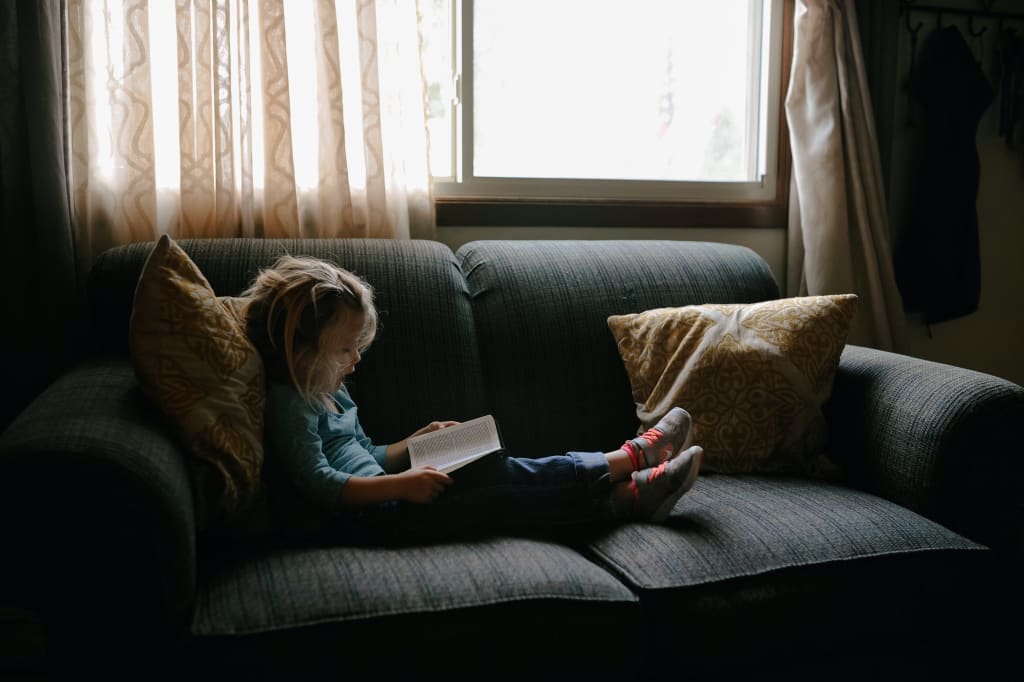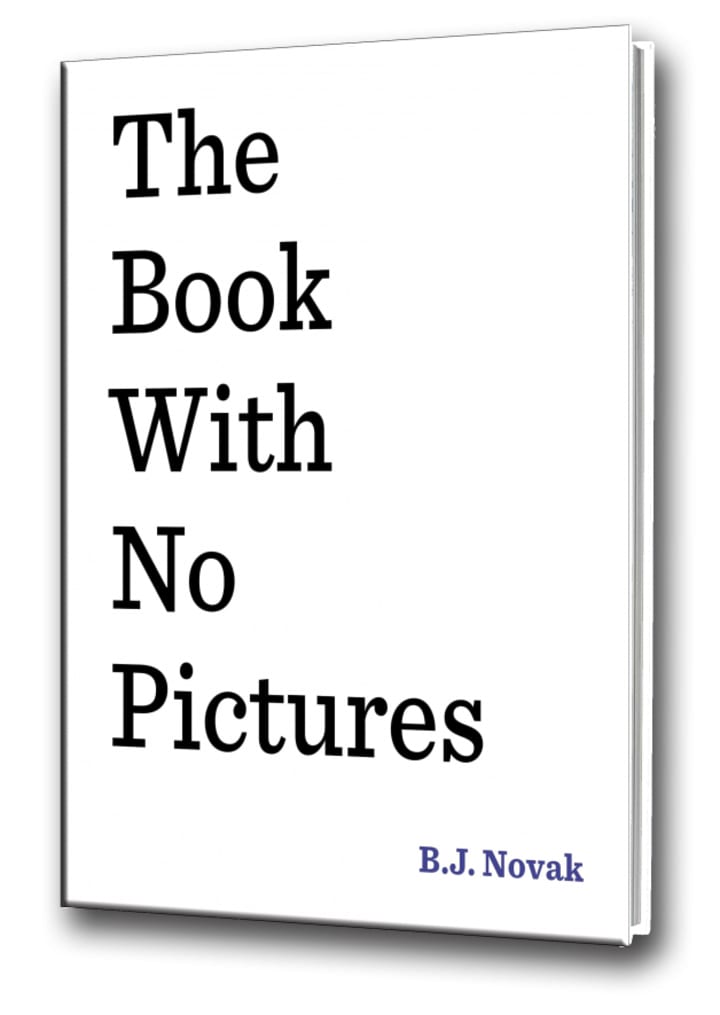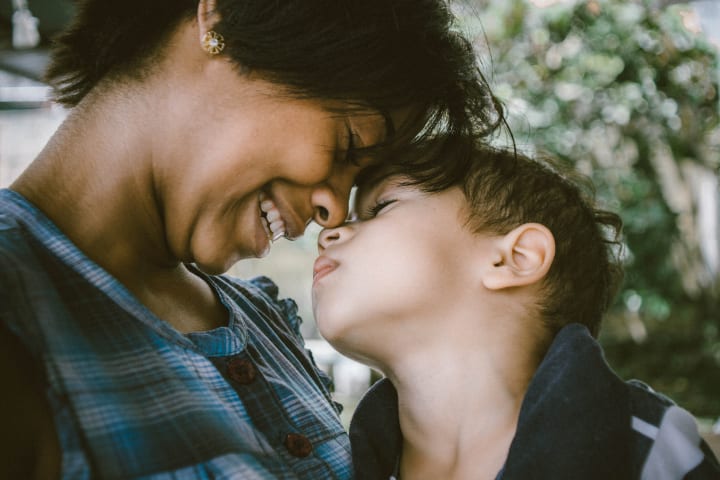Of Reading Childrens Books
A Look at the Foundation of a Childs Self-Growth

As a writer, with years on a hobby level, I have found myself writing in a plethora of styles; varied according to the purpose I deem inherent; in the writing of whatever subject or style my mind has tended to wander to, and find a worthwhile thread to cling to and follow for a time. As a father of six beautiful children, I find myself drawn toward the beauty and simplicity of children’s books. Having read countless varied styles of children’s books to my own children; and when secretly in my office and no one else is looking, reading them to myself for my own pleasurable enjoyment, satisfying my inner child self; I have discovered varying threads of content within them, and find within this endless category of books a treasure trove like none other in shaping the minds of the next generation; laying the cornerstone and foundation of such philosophical topics as love, personal growth, self-worth, familial stability, tradition, work ethic, character building, creative impassioned enterprise and the like. Of course, some would argue and say that children’s books are written for entertainment purposes only, and that I’m reading between the lines’ so to speak, far too deeply. Perhaps, I am to an extent, and towards this extent I shall continue to explain myself and shall do so unabashedly as I see fit to follow the thread of thoughts my mind has often traversed in silent contemplation.
When I read a children’s book, I not only see the beauty of the art, read the style of the writing, allow myself to be engrossed in the story woven brilliantly by its author; I see beyond to the character of the writer; to the interpretation of the artist; and view the very thread that binds them so beautifully together as to instill lasting memories, and choice lessons in young impressionable minds.
In simplicity, there is inherent beauty, and if one has the mind to look beyond the simplicity of the outer, to that which binds the inner workings, which one sees not with the naked eye; rather as a botanist does with a simple flower, like a daisy; placing it under a microscope, to view the very cells that make up the foundation of its larger physical aspects; so I continuously see beyond the illustrations portraying the simple stories, woven by a thousand writers for young minds.
I myself have read to my own children, the very books I read as a child, or had read to me by, parents, teachers, mentors, and friends, and now see how deeper thoughts, ideas, and concepts are woven into the beautiful fabric of children’s literature. I shall take one such example and expemplify it briefly to exonerate myself from those who think me particularly placid and existentialistic.

Over the holidays of 2022, I went Christmas shopping with two of my daughters in a local Target store, helping them to pick out gifts they thought suitable to give to their siblings on the upcoming festive day. We took the time, as we always do, to peruse the children’s book section in our less than methodical way of viewing, as many items in the shortest time possible, maximizing our efforts in the allotted shopping time.
While in this sensational section of the store, I came across a book I did not recall seeing previously, and proceeded to pick it up, and read it, in its entirety to my four year old daughter, confined to the child seat of the cart, we placed all of our gift items within. This is not meant to be a review of the book itself, rather a review of my perceptions on the threads masterfully woven within the simple book by its author, and my thoughts on other masterfully woven deeper meanings in a thousand other children’s books like it around the world.
The book was called “The Book With No Pictures” written and purposefully left un-illustrated by B.J. Novak. This simple read uses silly content to hold the attention of children, by masterfully forcing engagement of the adult reader toward playful nonsense. With the clever use of words and phrases, the book guides the adult into a type of play-write puppet-show with only the use of their voice and facial expressions to hold a child’s attention.

My Perceptions on the Book
The book is meant to close the maturity gap between adults and children through silly phrases, words and concepts that are meant to produce laughter through frivolous engagement with ones own expression, and interpretation of the words written on the pages in bright bold typography. I of course as a father of six children, many of them still quite young, held up my own standard of youthful vigor I often display, to further my relationship, and bonds of familial affection with my children. This of which I am proud to say, often warrants me the pleasure of hearing my children say to me, “Dad!!! Your so silly!!!” These times bond us. My children laugh, and smile and often become overwhelmed with feelings of love, admiration, and security, and scoot closer towards me to rest their head on my arm or chest, or to squeeze my cheeks affectionately as I often do with them, growing our bond of closeness stronger. I took this wonderful opportunity and proceeded to engage completely in the material, with animated voices and facial expressions that would make even the author, a comedian himself, smile had he been present.
Although my daughters decided against this irrational book of silliness, as a suitable gift for their brothers who regularly engage in frivolous nonsense such as this, and whom I thought it aptly suitable for, we moved on in our continued perusal of the store in search of some item they deemed worthy.
The Extraction of Onself from Percieved Normality
As we looked from this item to that, in pursuit of the ‘perfect gift’, I couldn’t help but wonder at the creative genius of the book. The author appealed to children, and to adults alike in the story line of a book meant to invoke creativity of the reader, and draw out of them a childlike display of irrationalism, and the extraction of oneself from ones perceived normality.
This extraction of perceived normality pushes one into a state of letting go of the self; showing one’s deeper emotional and relational self that they would other wise keep locked within; in order to invoke emotions in those around them, furthering relational connection.
I mused upon this, and concluded that people as a whole, are under a constant obligation to be, what society has labeled them as, and, caused them to become through the funneling process of the education system.

People in general, are creative emotional beings, and need to feel a sense of community and worth in who they are, and in what they are doing. Children are no different. At an early age, children seek for this sense of community within their parents and siblings. The early connections between a parent and child, builds a relational connection, and allows space for emotions to be expressed.
I see how the author of this book, weaved seemlessly, relational connection, and the impressionable concepts of creativity and self-expression. These concepts, can be seen in many ways, i.e. the reader expressing themself, the child seeing how the reader expresses themself; the child reacting to these expressions, or the child finding their own self-expression in reading the material themselves. Through them all, creative self-expression is allowed to flow, in an intimate relational setting.

All participants are allowed to be their true self and through this expression of their true self, the avenue of relational bonding with others, is founded as a reprieve from other non relational and non emotional aspects of life. As children grow and begin seeking a relational and emotional connection from others in their peer group, the connection they will look for will be similar to an extent, to the numerous examples they received from times such as this one — me a father reading a silly book in an animated way; laughing and giggling in the middle of a crowded store with my child, as if there was not another person in the world except for the two of us!
Peers within society, tend to place societal expectations upon each other. Children will respond to these expectations by trying to fulfill them, often becoming a version of themself, which deep down inside they are not. Another common response to these societal expectations, is children shrinking away into a shell to hide who they truly are deep down inside. All children and adults, to an extent; which is different in every person; will subconsciously seek a reprieve of societal expectations, in order to be their own true self. I would label this a ‘societal expectation reprieve.’

Relational Bonding as Foundation for Societal Expectation Reprieve
I thought of my own self and of other adults that I know; and began seeing threads in many avenues of the lives of other adults, whom it need not be said are grown children; and all of them in some way, shape, or form, seek some kind of reprieve from the overwhelming societal demands, delegations and discretionary philosophies pressed upon them. These, often, are overwhelming, and seemingly un-relenquishing in their oppression upon the minds of humanity, in the demand and prioritization of outward appearances, and ones standing in society, tending to push people toward a lack of emotionalism and relational connection.
I let my mind wander in its thoughts as I wandered with my daughters through toy, game, clothing, body product, food, and seasonal aisles of decor, filled with all manner of needs and wants that anyone could fill their life with; trying to either ‘keep up with the Jones’; or find items of personal reprieve to build emotional bonds with others such as games etc.

These emotional bonds are built through the engagement in such things as cooking, eating, games, books, or through watching of sports, producing art, music, or a thousand other deem-able ‘passions of reprieve.’ Through these ‘passions of reprieve,’ relational bonds can be made, and emotions of the inner self are allowed out, as expressions of the true self, to those they are in relationship with. I shall not bore you with numerous rabbit holes my mind followed with a rapidity even I scarce could keep up with. I shall leave you with this thought.
For in my musings of how children’s literature can draw people together, and allow for an emotional and relational space outside of societal demands, I saw how this simple children’s book, along with its colleagues, lay a critical foundation for the next generation. This foundation shows through action that there is nothing wrong with seeking a reprieve of societal demands, and digging deeply into the inner child self, to find one’s true emotional and relational self.

Allowing oneself to be, truly who one is within, and not just what societal impressions placed upon them force them to become — something they are truly not — as an individual, is extremely freeing. To be a relational being, is to truly accept oneself as an emotional being, and let down the guard society demands we place around the emotions we have the ability to express, and through these emotions we not only mature ourselves, we build relationships with other emotional beings. This simple book allows for the expression of emotion, of both the reader and the listener; allows for relational growth, and the deepening of bonds through the release of self.
In the reading of a children’s books such as this one, the adult and the child connect. The adult is allowed a societal expectation reprieve, and the child is allowed to see how a deeper side of themself, can be expressed, in a particularly close relational setting. During this interaction, both adult and child are feeding off of each others emotions, and through seeing and feeling each others emotions, they are drawn closer together in an emotional relational bond outside of all other societal expectations.

Closing Thoughts
As we continued our felicitous shopping endeavor together, my mind wandered to the hundreds and hundreds of books upon our shelves back at home, and I began wondering; How many other underlying threads of deeper thought processes are within each of these books? My mind traversed to the many children’s books I’ve written for my own children, and to the very first one that I published.
As a children’s author myself, I was delighted with the outstanding Kirkus Indie review, my children’s book, ‘Little Elephant’ received. I’ve copied and pasted it here, as in it, I see that the reviewers, have so aptly found, the deeper underlying theme and threads, that connect parents to their children, a child’s outlook on life, family, and the world.

These, are, the very underlying threads, I purposefully wove into my book for my own children, so that, when I’m long gone, and my children sit to read my children’s books to their own children, and grandchildren, they get a glimpse into my own heart, and a deeper understanding, of their own place in the world. I pray that my desire to inculcate their feelings of security within their own self, their own emotionality, and their own relational connections, is understood. And I hope the understanding, that I wish them to pass this on through the generations, is sincerely felt.
As I sit and write these words at my humble desk, a table in our large travel trailer, as my office, is under remodel and expansion reconstruction, I’m reminded of the snuggling and closeness experienced with my children; as together we read Christmas books and stories, over the following holiday week.
Now, as I pen these words, ideas for Christmas books to write for my own children, flow through my head. I look forward to weaving deeper threads, like world view, philosophy, religion, and spirituality into my own writings; for my own children’s young impressionable minds — and your children’s if you choose to read them — creating for us a space for emotional expression, and, a heartwarming, safe place, for relational bonding.
J.C. Miller
If this article has resonated with you, please leave a comment, share, and subscribe to my articles; so that I may further the reach of the message I was sent here to give to others. Thank-you for your time, your energy, and sharing your light and love with others. I welcome all comments and constructive criticism and any small edits that stood out to you! Love and Light!
Note: Here is the review of my childrens book as I mentioned above.
Kirkus Indie Review of ‘Little Elephant’ written by Joshua Miller, Illustrated by Zuzana Svobodova.
A young elephant navigates a day in the wild with their parents’ enduring love, support, and protection in Miller’s picture book.

The story, built upon a basic rhyme scheme, follows Little Elephant as they develop the autonomy to sleep, eat, and play in the wilderness. In each spread, the animal receives affection, assistance, and safety from their parents, which helps Little Elephant to begin to form their identity. Beginning with an omniscient statement that introduces the protagonist as a member of “the wild,” the book soon transitions to the child elephant’s first-person point of view. Svobodová’s full-color, cartoon-like illustrations will be sure to appeal to very young audiences, with Little Elephant’s natural surroundings depicted as a saturated blue-green backdrop, contrasted with warm yellows, oranges, and pinks. The characters’ facial expressions effectively tell a story of familial love conveyed, exchanged, and internalized. Although the book feels more as if it is constructed as a contrived rhyme scheme, rather than as a distinct story arc, it clearly gets across its theme: that a parent’s purpose is to guide and protect their kids as they try to find their places in the world.
A work that offers young readers a soothing and well-illustrated tale of family bonds.
About the Creator
Joshua C. Miller
Joshua C. Miller is an avid reader & writer, he is an author, speaker, teacher, firefighter, father of six, traveler, & spiritual truth seeker, & writes from his wide and varied experiences in life, work, family, & the outdoors.






Comments
There are no comments for this story
Be the first to respond and start the conversation.